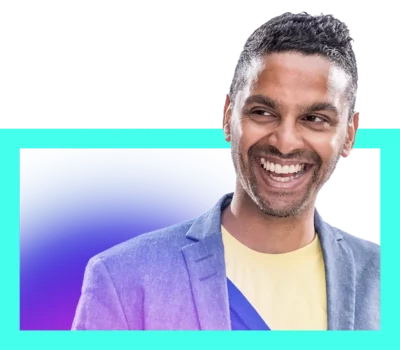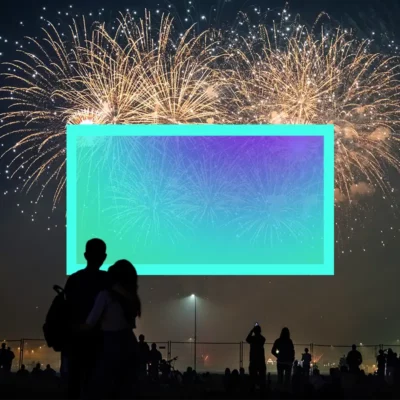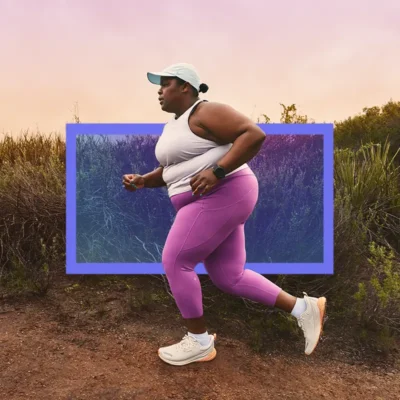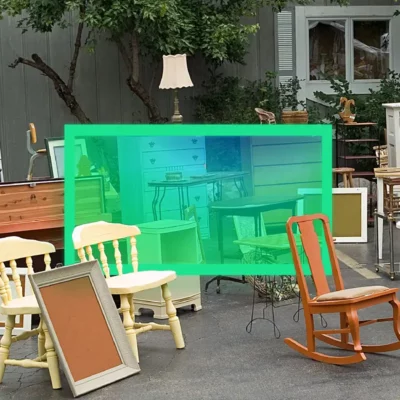It’s ok not to know
Co-founder of Insight Meditation Society (IMS) and author of several popular books on Buddhism, Joseph Goldstein has been a legend in the world of mindfulness for nearly half a century. But when he returned to US from India in the early ‘70s, penniless and without a job prospect, he had no way of knowing what his future held. This week, Joseph tells the story of how he learned to keep himself open to all possibilities and embrace the uncomfortable feeling of not-knowing.
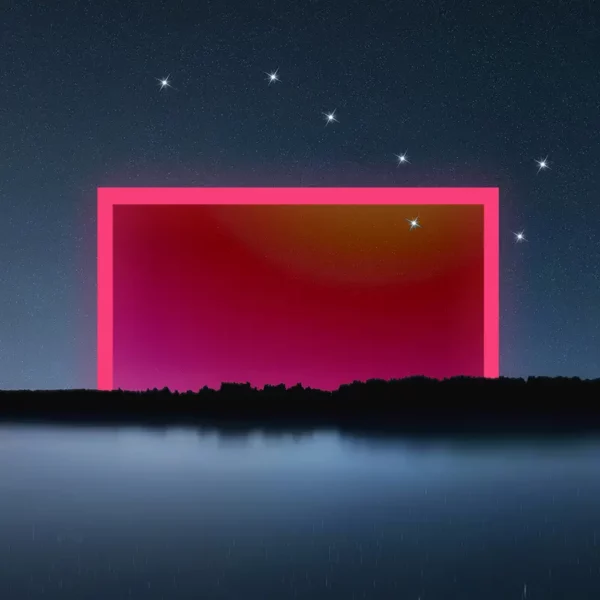

Table of Contents:
Transcript:
It’s ok not to know
JOSEPH GOLDSTEIN: Sitting at the front of this room, I feel like an orchestra conductor. If people are dozing off, I’ll riff something humorous. If people need to quiet down, we settle into silence. I’m conducting the energy of the room. This is what I’m supposed to be doing.
ROHAN GUNATILLAKE: By the time he was 30, Joseph Goldstein felt confident that his mindfulness practice would be critically important to the rest of his life. But when he left India in 1974 and returned fulltime to the U.S., he had no idea what the rest of that life would look like. This week, Joseph tells us how he endeavored to keep himself open to all possibilities, while learning to be ok with that uncomfortable feeling of not knowing.
In this series, we combine immersive first-person stories, breathtaking music, and mindfulness prompts so that we may see our lives reflected back to us in other people’s stories. And that can lead to improvements in our own inner lives.
From WaitWhat, this is Meditative Story. I’m Rohan, and I’ll be your guide.
The body relaxed. The body breathing. Your senses open, your mind open, meeting the world.
GOLDSTEIN: It’s a remarkable practice of turning inward. With enough time, we can start to observe the mind in a very systematic way.
My words reverberate out into the open air. Past our circle of chairs on the outdoor patio, towards the modest, wooden bungalows lining the field, and the gently swaying pine trees beyond. I feel the warmth of the summer sun on my neck and the cool breeze against my face. It’s 1967. I’m 23 years old and I’m at the resort my family owns in the Catskill Mountains.
Seated around me on the patio are about a dozen women looking at me with wondering faces. They’re all about my mother’s age. Dressed in comfortable sun dresses. Their big hairdos are held in place with plenty of hairspray. I’m dressed in chinos and a polo shirt. I guess you could say this is my first Dharma talk for a western audience. And it’s a very western audience.
My family’s resort is in the Borscht Belt, where Jewish families come and vacation. The women spend most of their days playing mahjong and taking care of their children. When they heard the owner’s son wanted to give a little presentation, they were nice enough to humor me. They’re not throwing tomatoes or anything. They’re being very polite. I can just tell there’s minimal interest. They’ve come more out of curiosity than a desire to pursue Buddhist teachings.
But those are the things I’m interested in.
I’ve recently returned from my first trip to India, where I was deeply immersed in meditative practice. Buddhism is a relatively new passion of mine. And it feels like the answer to so many of my questions. As a young man, I’m very inquisitive about the world around me. When I’m 12 years old, my father dies unexpectedly, and the stark fact of death — the power of the idea that someone who is an integral part of your life is there, and then they’re not there — it consumes me. In my late teens, I become obsessed with the question, “Does God exist?” And over the following years, my angst becomes existential. I distinctly remember standing in front of a mirror, looking into my own eyes and asking, “Who am I? Who’s behind all these emotions, and insecurities, and uncertainties?”
When I’m exposed to meditation and mindfulness, it feels like a revelation. It opens me up to a new world where I can observe my suffering instead of drowning in it. My instinct is to share this with everybody.
But this first attempt isn’t working. After half an hour, I bring the talk to a close. There’s a smattering of awkward applause. I smile. A couple women have clarifying questions. But then they leave. I decide to take a walk on my own out onto the grounds of the resort.
The smell of freshly cut grass fills the air and I stroll through a spacious field. Soon, a large building in the resort comes into view. We call it “The Casino,” but it’s really not much more than a social hall. It’s where bad comedians and musical acts come to perform. Right now, it’s empty.
It’s peaceful here. Quiet. Serene. And I’m surprised how uncertain I feel around it all.
Reintegrating to normal life after India has been difficult. The energy here is so different. I’m so different. I’m trying to figure out how to fit back in.
Initially, I try substitute teaching at the local high school in my hometown. But one day, the kids ask me what I think about smoking pot. And naively, I’m honest with them. Within minutes the story spreads to the faculty room, and let’s just say that’s the last time I’m invited back to teach.
Then, I seek guidance from someone I’d become friendly with on my trips to India. An American. His name is Ram Dass. He’d taught at Harvard at one point, so I write to him asking if I should teach at a college somewhere.
His letter back is polite, but straight to the point. “I don’t think that’s a good idea,” he writes. “The academic world is not where you want to go.”
So, again, I don’t know what to do. At this time in the US, there doesn’t seem like much for someone like me to do. Mindfulness and meditation are brand new ideas for most people. Teaching seemed like my one real option. But that has gone nowhere.
I try to puzzle out a solution to my problem. Anything to not feel this sense of uncertainty. All this not-knowing. But try as I might, I can’t come up with an answer.
In India, I’m part of a small group of Westerners practicing intensive meditation in a village called Bodh Gaya. We sit for 7, 8, sometimes 9 hours a day, focusing on our breath, our bodies, our minds. Extended meditation like this can be difficult and uncomfortable. But we support each other through our frustrations and pains.
Coming out of that experience, back home to upstate New York, it’s like I’ve been scuba diving and rose from the depths too quickly. I’m unsettled and a little depressed. It feels like I’m grieving.
I’ve finally found this thing that I’m passionate about and that I think I might be good at. I just can’t see what to do with it. There doesn’t seem to be a clear path forward here.
I return to my room — a small space behind the office with a pullout sofa. I put on a Bob Dylan record and mope. The jangling sounds of “Mr. Tambourine Man” play from the speakers. I lay down and close my eyes. I just want to get back to India — back to my studies and the certainty of my practice. Laying here in my room, I don’t know what to do with myself. And that feeling of not-knowing is really unsettling.
It’s as if my life exists as two separate strands. One is the strand of my practice, which feels clear and stable. The other is the strand of how that practice will manifest, how I can ever hope to apply it to the world. Spiritually, I’m flying high, but I have no idea where to land.
GUNATILLAKE: Has there ever been a time when you felt how Joseph is feeling right now? A time when you just didn’t know how the different parts of your life were going to work alongside each other? Whatever memory, whatever potential discomfort comes up, let it be here.
GOLDSTEIN: I toss my duffel bag through the door of the camper and take a look around. The whole thing fits onto the back of a pickup truck. There’s a space to sleep above the cab. A spot to cook. Looking at it all, it conjures up a spirit of vagabondish wandering. It’s like something out of a Kerouac novel.
It’s the summer of 1974. I’m about to start a long road trip with my friend John Travis. I’ve met up with him here in Wichita, Kansas, and we’re going to make our way to San Francisco.
John loads up a box of food. I double check that I’ve got my sleeping bag and my copy of The Diamond Sutra — the book I carry with me everywhere these days. Finally, we both climb into the cab. I hear the engine sputter to life. Feel the rumble under the soles of my feet.
I’ve spent the last seven years traveling back and forth to India, continuing to hone my mindfulness practice. It’s been incredibly enriching. But now, I’m back in the West for good this time.
I struggle with severe back problems. Lots of discomfort. It makes it difficult for me to meditate for long periods of time. I hadn’t wanted to leave India. But I need to be here for treatment and for rest. I can’t help but think I’m missing out on something important by not being in an environment where my practice can be nurtured and supported.
I feel even more committed to mindfulness than I did seven years ago. But back in the States, the question resurfaces: what do I do with it? I don’t have any money. How do I make a living? How do I use what I’ve learned? How do I survive?
These are big questions. And I have no idea how to answer them.
So when John invites me to join him on his cross-country trip, I jump at the chance. I can’t imagine it will lead to anything, or resolve any of my problems, but at the very least, it sounds like fun.
We travel through the sprawling expanse of the American Midwest. I’m taken aback by how flat everything is. The sky unfurls above us like an endless canvas. We go hundreds of miles without seeing a tree. It’s shocking and beautiful. So different from the dense woods of my childhood home and the constant bustle of Bodh Gaya.
The question of my future still looms on the horizon, and all the uncertainty that comes with that. But for now, I’m doing my best to simply enjoy the ride and remain open to whatever’s coming down the road.
I’m walking up Telegraph, to University Avenue in Berkeley, California. The sidewalk is crowded with students. A young woman sits on the ground selling beaded handbags. I’m not paying any of them much attention. I just got into town. I’m at the end of my cross country trip. And I need to find a bathroom.
I’ve already been refused at two different restaurants. The stern looking owners give me one look before waving their hands, saying, “Restrooms are for customers only!”
“Well,” I smile to myself. “This wouldn’t happen in India.”
I’m about ready to give up, when I open the door to a third restaurant. It isn’t fancy, no tablecloths or anything. A few customers are seated at small tables, chatting over their food. I walk in and stop dead in my tracks.
Sitting alone at one of these tables is Ram Dass — my friend who answered my letter. His mane of gray-white hair blends seamlessly into his big bushy beard, accentuating the shiny top of his bald head. He’s wearing a loose-fitting white tunic, a long strand of beads draped around his neck.
His book, Be Here Now, came out a couple of years ago and sold millions of copies. I imagine he’s constantly approached by young students seeking his guidance and is probably enjoying this quiet day to himself.
But when he recognizes me, he smiles. And he waves me over. To many, Ram Dass is a teacher, an icon. But to me, he’s just a warm friend. A brother walking the path.
We talk for hours. He tells me he’s been invited to teach at a new university in Boulder, Colorado. It’s different from the world of academia he warned me against. It’s a Buddhist oriented college founded by a Tibetan master named Chogyam Trungpa. It’s called Naropa University.
Ram Dass is teaching a course on the Hindu scripture, The Bhagavad Gita. They’re expecting a big turn out. I tell him it sounds amazing. Ram Dass’ face erupts in an open-mouthed smile. He runs a hand through his massive beard. “How would you like to teach the meditation portion of the class?”
Immediately, I say yes.
Leaving the restaurant with a big smile on my face, I marvel at the pure serendipity of this meeting. What are the odds I’d be kicked out of two restaurants, walk into a third, and land a job with the biggest new thing happening in Buddhism in America? I feel somewhat guided to this moment.
All my months of toiling in uncertainty and trying to know before knowing really emerged, it got me nowhere. But when I keep myself open to all possibilities — to a road trip with a friend, to a chance meeting in a restaurant, to a job at a new and exciting university — a pathway forward starts to reveal itself.
I feel a lightness inside me. This feels big. I’m thankful for this conversation. And I’m thankful that the restaurant had a bathroom.
GUNATILLAKE: This happens. Opportunities present themselves when we stay open, when we say yes to things, even though we may not know what will happen next. With mind bright and our curiosity primed, we can say yes to this moment. Yes.
GOLDSTEIN: A lone hand raises into the air. I see the mala beads dangling from the wrist.
In front of me is a sea of eager faces. Most of them are young. A lot are hippies. Long flowing hair. Long flowing Indian fabrics. They come from all over — South Carolina, Wisconsin, New York. This is a room full of seekers. They’re wide-eyed with a sense of energetic rebellion and harmony. I sit cross legged on the floor in a soft blue velour shirt. We just finished a discussion on the basic tenets of Buddhism and I’ve opened the floor for questions.
I call on the young man with his hand raised.
“If there’s no self, who’s reborn?” he asks. “If there’s no self, who gets angry?”
I can’t help but smile. These questions are very familiar. The idea of selflessness. or non-self, is a key element to Buddhist teaching. But it’s a hard concept for people to understand. Everybody thinks of themselves as a self — just like I once did, looking into a mirror asking, “Who am I?”
I scan the large, warehouse-like classroom. It’s not like any traditional classroom I’ve seen. Mats have been laid down to make it a little easier on peoples’ knees. Behind me, beautiful banners with Tibetan motifs hang on the wall — not that anybody spends much time appreciating them. We spend most of these classes with our eyes closed.
I return my gaze to the student and say, “Think of the Big Dipper. We’re all familiar. It’s an obvious constellation, right?”
Several students nod in agreement. This is the easy part.
“Now,” I say. “Ask yourself this question: Is there really a Big Dipper up in the sky? Is there really a giant spoon up there among the cosmos? No. The Big Dipper is just a concept.”
“From our perspective on Earth, we see a certain layout of stars in the sky and we apply a pattern to it. We give that pattern a name, a designation. That’s what the self is. The word ‘self’ is just our name for the pattern of mental and physical elements of the mind and body. It’s no more there than a Big Dipper is up in the sky.”
Now their brows are furrowing. I know it will take a long time for them to see how this really applies to their sense of self. Maybe years of practice and meditation. But I know many of them will keep working at it. Because that’s what I’ve done.
The students here are hungry for and interested in Buddhist teachings, just like I was, as a young student in India. Unlike back then — when there were five or six of us discussing ideas we’ve just learned — there are over a thousand students at this first summer session at Naropa. Their attitude is so different from those lightly curious mothers I tried to teach up in the Catskills. They’re so engaged. And there’s a lot less hairspray, too.
Sitting at the front of this room, I feel like an orchestra conductor. If people are dozing off, I’ll riff something humorous. If people need to quiet down, we settle into silence. I’m conducting the energy of the room. Teaching in this community feels completely natural to me. This is what I’m supposed to be doing.
Not all of our time is spent in rigorous study and meditation. We spend afternoons by the pool listening to music. We see performances from poets like Allen Ginsberg and musicians like Philip Glass. Naropa is like a Buddhist Woodstock. It’s an inflection point in American culture — a big turning point for the country’s growing interest in mindfulness that will spread out from here for decades to come. And it’s a big turning point for me, too.
This is where I deepen my bond with fellow teachers, Jack Kornfield and Sharon Salzberg. When this session ends, we get invitations to meditation seminars all over the country. We host our own month-long retreat in the Sequoia National Forest. We establish our own institution rooted in the Theravada tradition.
Things grow and build in a grassroots, very organic kind of way.
And for me, the seed of it all is first planted in that chance meeting with Ram Dass.
Just a few months before that, I had no idea how my practice would manifest itself. How this thing that I’m so passionate about, that is so important to me, would turn into something I could do for the rest of my life. Most people are very uncomfortable with the sensation of not knowing. They feel unsettled by it. And in the past, I would count myself among those people.
But I understand now that not knowing is okay. We can actually settle into that space of not knowing, into that discomfort. And it can be a very creative space. Because we’re not locked into anything yet. There are only possibilities. And when we allow ourselves to be open to whatever those possibilities may be, the pathway forward begins to reveal itself.
I feel fortunate to have found my passion so early in life. To have found the thing I knew I wanted to fully commit myself to. And I’m fortunate that it happened at a time when a receptive audience was waking up all across the country. I know there are many people who struggle to identify their purpose or their essence, because they can’t ever imagine how it will manifest. How they will make it into a livelihood in real, practical terms.
It can force us to shy away from that unpleasant feeling of not knowing. We try to fix it. We try to know, before the knowing really emerges. And it becomes a struggle.
I really do believe that so much of enlightenment is about lightening up. Not taking yourself so seriously. That doesn’t mean we should ignore the difficulties and anxieties we have. Notice them, inquire about them, but don’t flail and drown in them. They are part of your life unfolding. It’s okay to not know. Open yourself up to that feeling of not knowing, to the abundance of possibilities that can lead you down your life path.
Rohan’s closing meditation
GUNATILLAKE: Thank you Joseph.
I for one am so glad that Joseph went down the path that he did. It’s only really because he is, that we are. The work that he and his peers did back in the day to germinate the teaching of meditation in the West, laid the foundations for the modern mindfulness movement, of which this show is just one expression of. When it comes to 21st century mindfulness, JG is an OG.
Just as in the past, when I’ve had to design a meditation based on the stories of one of my heroes in the mindfulness tradition, it’s a bit daunting. Yes, there’s some fear I can sense here. Also, a little excitement, knowing that Joseph will listen to this episode. So let’s do it.
And the theme I’d like us to explore from Joseph’s story, is that of being open to new possibilities, even when not-knowing the outcome may feel difficult. And like I hinted at earlier, one way of doing this is by taking on a “Yes mind.”
In the context of mindfulness and meditation, I think Yes has two meanings.
The first is, Yes, I can clearly feel what is happening.
And the second is, Yes, I am okay with what is happening.
These are the Yeses we’re going to play with, and the technique itself is — like many great techniques — surprisingly simple.
Whatever physical sensations come up as most obvious in our awareness, we just say yes to them.
Whether it’s a feeling of warmth. A tingling sensation. An itch or area of tension even. We just say yes to it.
Whether pleasant. Or unpleasant. Or somewhere in between. We just say yes.
Saying yes to our experience in the body.
Whatever it is. Wherever it is.
Yes. Yes. Yes.
Whatever is most obvious in experience. At whatever rhythm works for you.
A feeling of solidity. Yes.
A moment of discomfort. Yes.
Itching. Yes.
Warmth. Yes.
Training ourselves in awareness and acceptance. Letting our Yes mind open up to even more subtle elements of our experience.
Now that we’ve got into it, let’s remember the second kind of yes.
The Yes that not only knows what is happening, but is okay with what is happening. The Yes of allowing.
And the best way to bring that into play is to notice if there is any resistance associated with the thing you’re saying Yes to. Are any of your yeses a yes, but?
Resistance is most common when we’re looking at the difficult. Such as a painful sensation.
The yes meditation is therefore not only about awareness and acceptance, but also about honesty.
Being totally honest about what the quality of our Yes is really like, even if there’s discomfort. And saying Yes to that too.
Whatever is happening right now. Yes.
Whatever is happening right now. Yes.
Whatever the quality of our ability to say Yes is. Yes.
Thank you Joseph, for your story and for everything. And thank you.
Go well.
We’d love to hear your personal reflections from Joseph’s episode. How did you relate to his story? You can find us on all your social media platforms through our handle at meditativestory, or you can email us at: [email protected]

